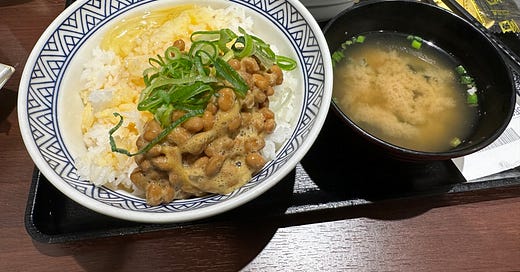Art and booze: the Spring of my Life
Tokyo, 5 April 2023 - with great art, poor art, and excellent booze
A morning of art, an evening of beer and rice wine.
Again awake before five, I found myself in Yoshinoya before six. My usual order in this chain, and all of its rivals – Sukiya, Matsuya, etc - is made just before or just after the sun rises, and is always the nattō set. Nattō is sticky fermented soybean which, when mixed with soy and mustard, becomes a delicious, gloopy, stringy mix. On hot rice, and with a raw egg and chopped spring onion, it becomes a thing of beauty. Naveen, somehow, disagrees. But you tell me that this is not a work of art:
Thus inspired, I walked the hour and a half or so from Kanda to Sumida, the old low town during the Edo period. Appropriately, the museum devoted to the work of Hokusai - that great, imaginative evoker of the Edo shogunate and thus the progenitor of all Japanese visual art as we might know it (anime, manga, etc) - is in Sumida, nestled between a blossom canopied play park and streetsworth of Edo antique shops. The artist himself spent most of his life here.
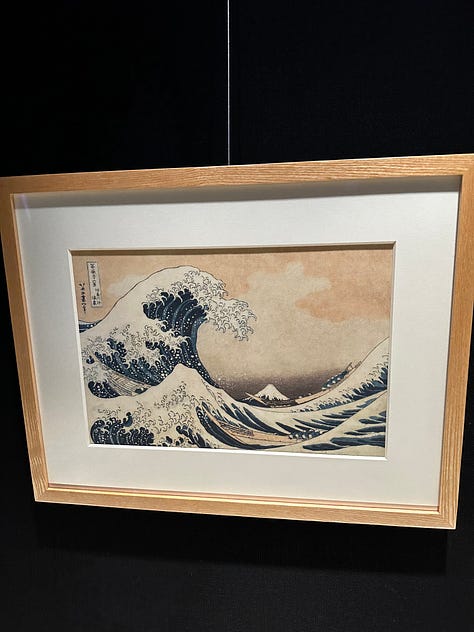
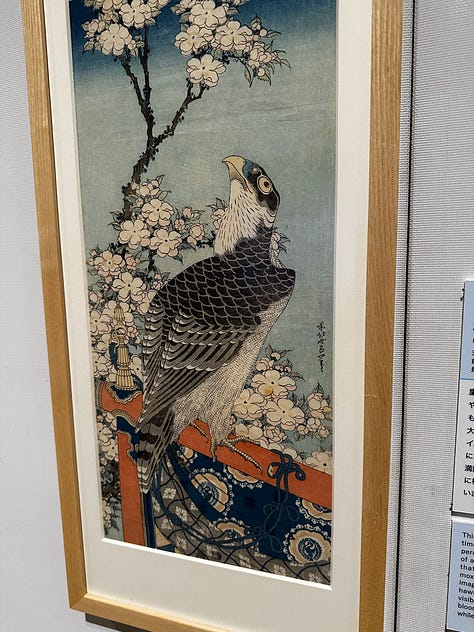
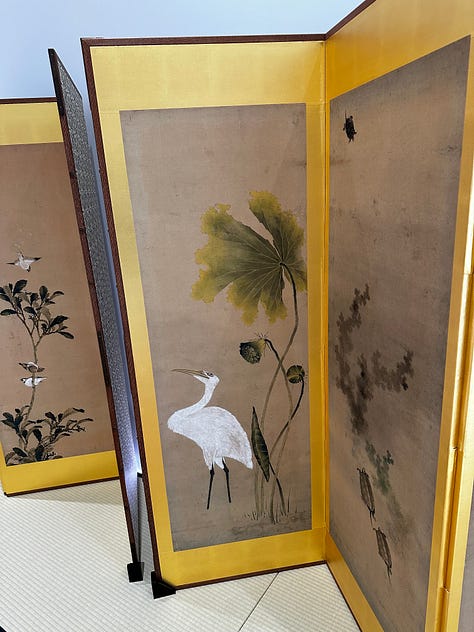
I saw sketchbooks; I saw paint-stained print blocks. I saw one of about 100 copies of the Great Wave off Kanagawa: I was able to stand there, in the dark, with no one else in the room, before this most famous work of art. There were no hordes of tourists snapping-but-not-looking at Sunflowers or Mona Lisas: there was just me in the lowlight and the great wave with all of its famous fingers and the famous mountain behind.
In the shadow of
Kanagawa’s great wave -
Better days to fish…
By about 11 o’clock, Naveen had finally risen and I met him for a “supercharged”coffee in what turned out to be a Mercedes showroom in Roppongi. Around the corner, the National Art Museum, which appears to have no permanent collections, was showing the selected few – something like 200 large canvases - winners in a nationwide watercolour competition. I am afraid to say, and with no painting credentials myself, that these paintings were not such that the posthumous memory of old Hokusai need vex itself.
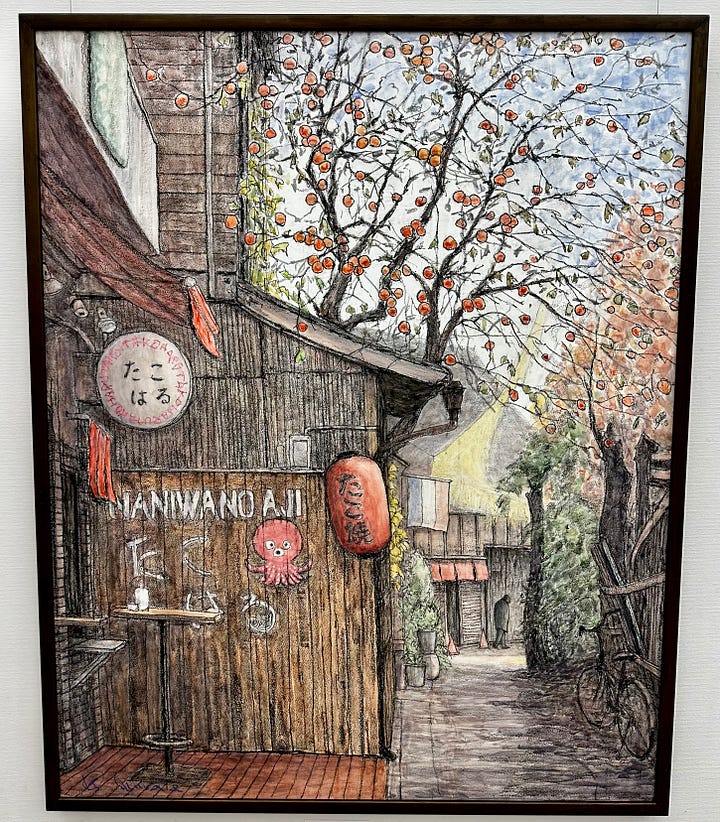
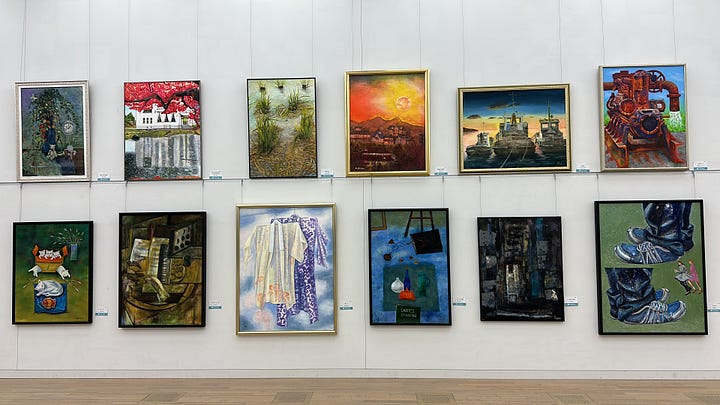
After two days of determinedly waking up before the sun, the early rises had got to me and I ended up “napping” for something like four hours in the afternoon.
This proved to be a good idea in hindsight after an evening of drinking and snacking among the railway tracks of Yūrakuchō.
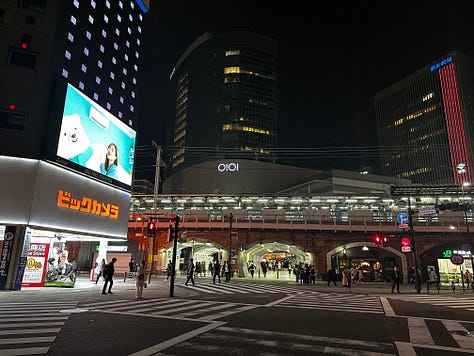
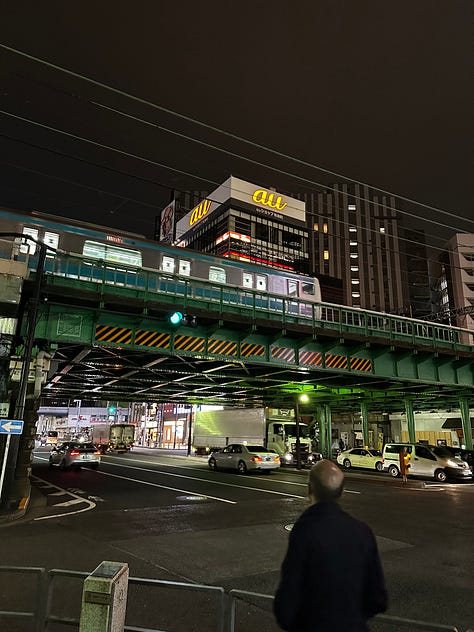
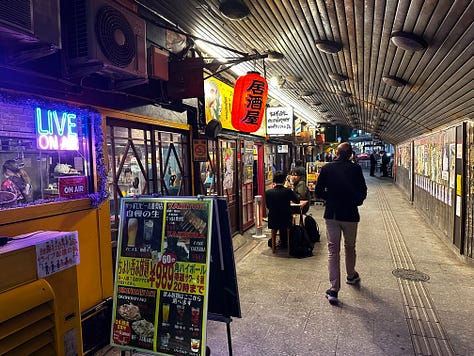
First, we joined the long benches of a raucous after-work-on-a-Wednesday, salaryman drinking party.
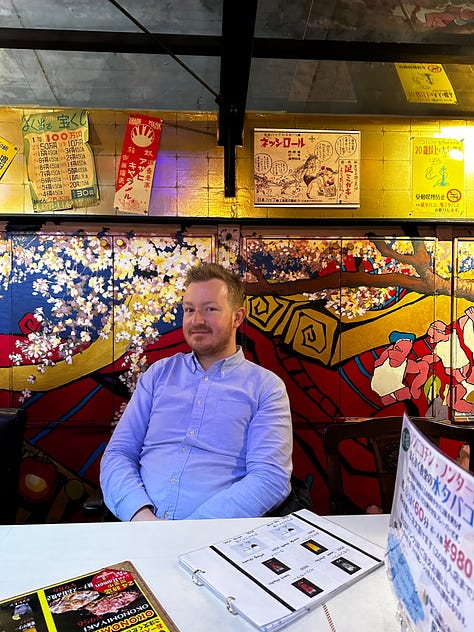
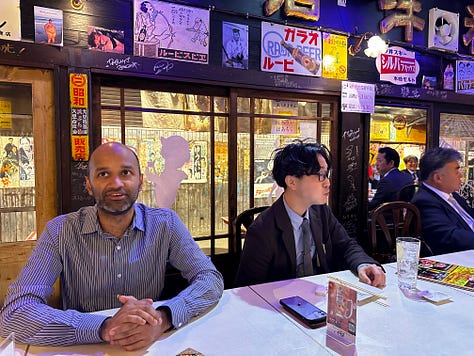
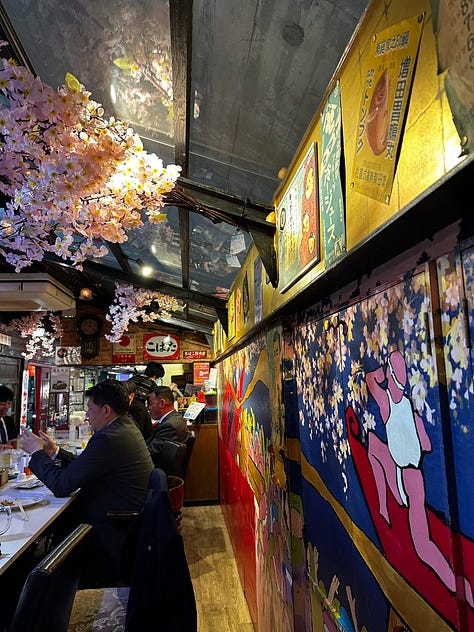
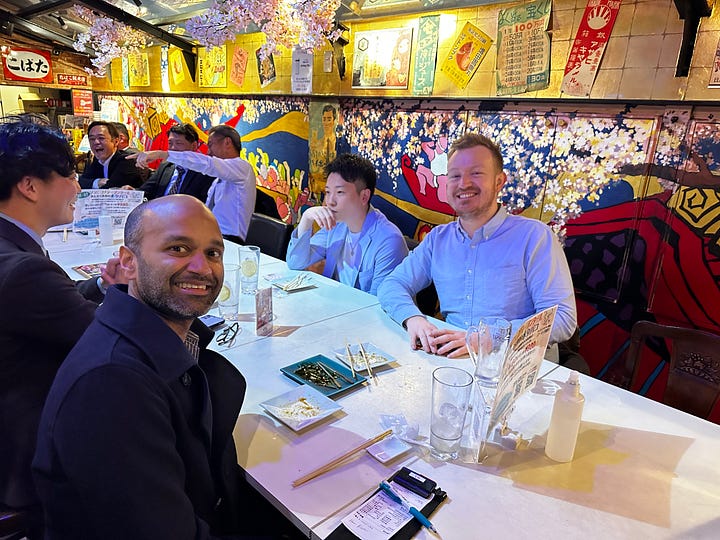

Next we went round the corner and there, under the southbound tracks, in a long, narrow, low-ceilinged bar, run by a British, former rugby player, gorged on raw, grilled and deep fried fish. The atmosphere was made even more convivial by the international crowd, including the central bench, an Anglo, French, Japanese business party, who had just discovered that the French expression for cheers, “chin chin”, is the same expression little Japanese boys use to refer to their willies. Oh how we laughed.
Fish so creamy, it
Seems to have swum through butter -
Sake in April.
Pre-empting summer,
Tempura asparagus -
Tongue-burn then sunburn.
From there, we made our way past the gleaming, fancy shops of Ginza to a downstairs bar called Ginza 300 - so named after the price of every single item on the drinks menu; ¥300 is a little short of £2- where Naveen and I were only too willing to avail ourselves. Then just after midnight, to the last train home.
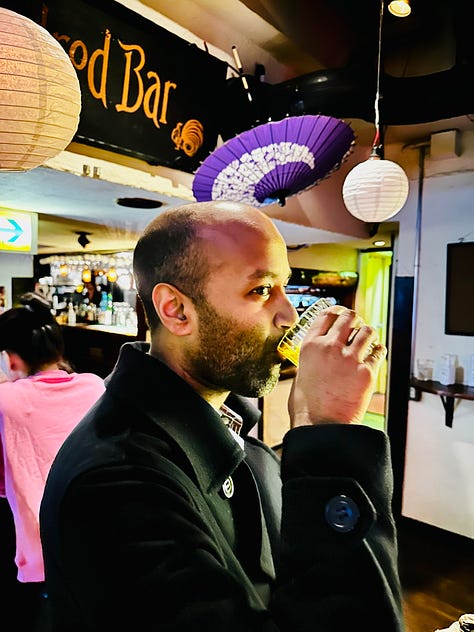
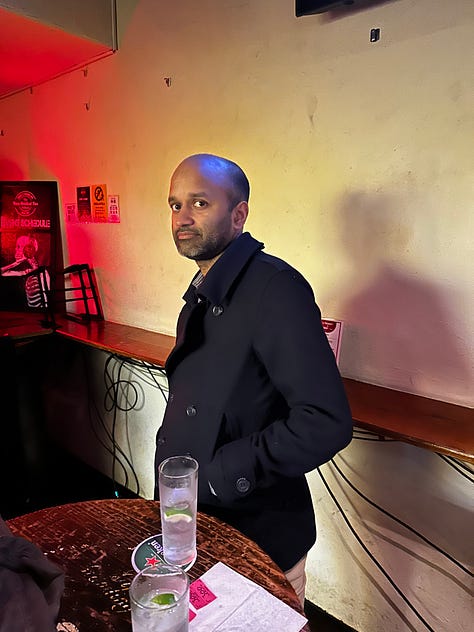
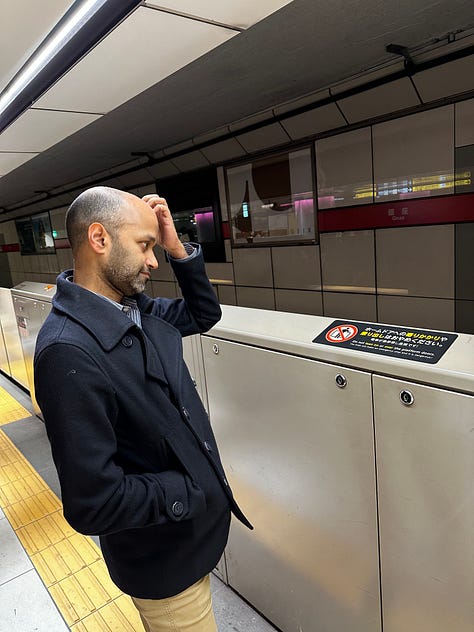
Sayōnara for now.

